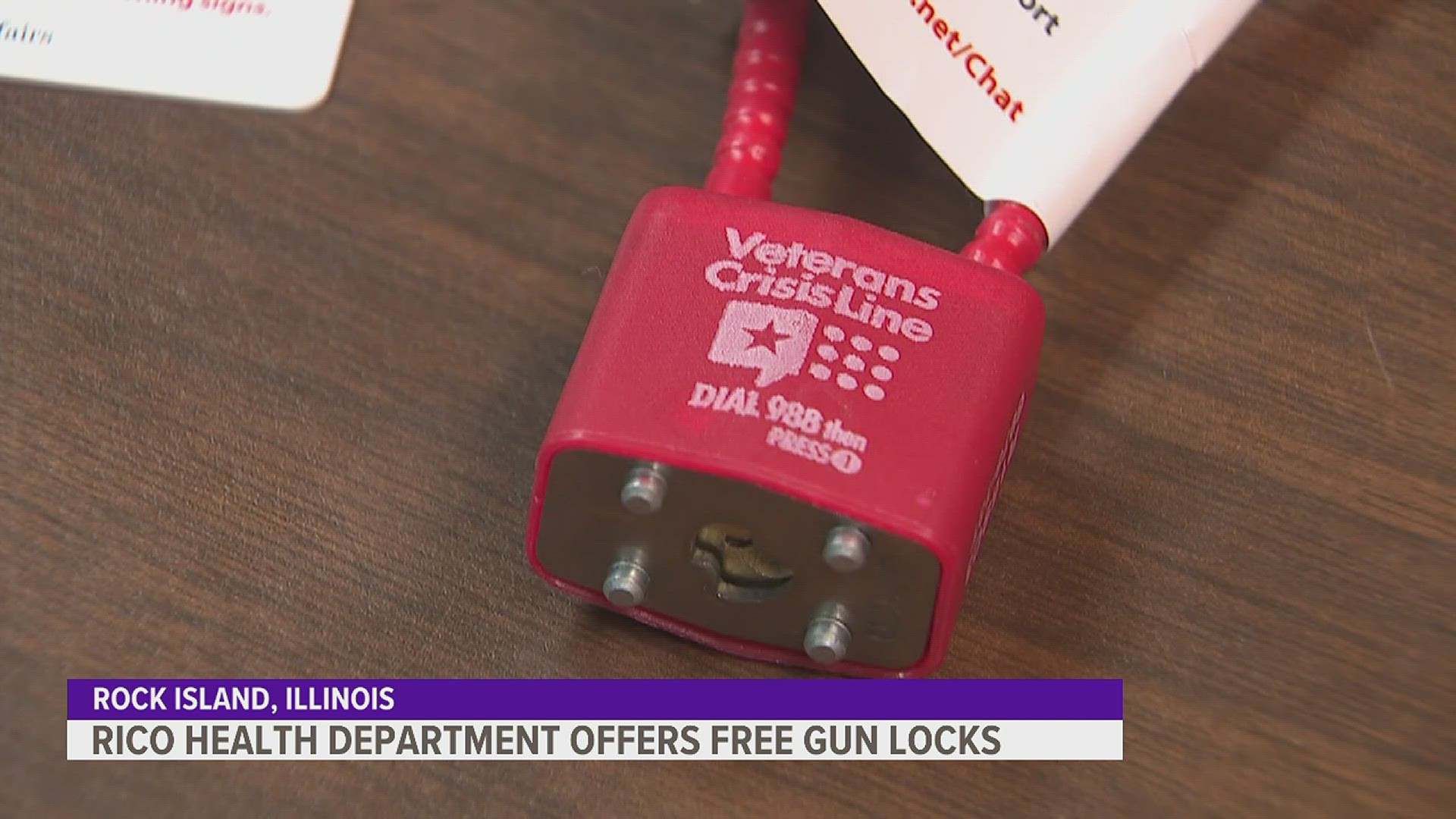ROCK ISLAND COUNTY, Ill. — Update Aug. 23 at 12:39 p.m.: Gun locks have been restocked, with another shipment on its way from the Illinois Department of Public Health, according to Rock Island County Health Department Interim Administrator Janet Hill.
Update Aug. 18 at 8:46 a.m.: The Rock Island County Health Department is temporarily out of stock of gun locks.
The interim administrator, Janet Hill, said in an email that the program has been successful, leading to them running out. Hill also said more have been ordered.
Locks are still available through the sheriff's department.
Previous Story:
Free gun locks are available for anyone who requests one, no questions asked, through the Rock Island County Health Department and Sheriff's Department.
The "Together for a Safer Illinois" program works to make gun locks readily available to prevent tragedies, such as accidental shootings, gun violence, gun thefts and suicides. The locks are provided through the U.S. Department of Veterans Affairs for distribution through the Illinois Department of Public Health.
The free locks can be picked up at the Health Department, located at 2112 25th Ave. in Rock Island, between 8 a.m. and 4:30 p.m. Monday through Friday. Deputies with the Rock Island County Sheriff's Department will also carry the locks in their patrol cars.
The locks include installation instructions for autoloading pistols, revolvers, auto-loading and pump-action shotguns, bolt action rifles, modern sports rifles and single-action revolvers. The locks also come with information about the national 988 suicide and crisis lifeline.


No information will be collected from those who get a lock at the health department. There are also no residency requirements, as they will give a lock to anyone who asks for one.
The Health Department also sees this initiative as a suicide prevention tool.
"The Zero Suicide Initiative of the Quad Cities says there are 53 people who commit suicide every year and most of them are through firearms," Janet Hill, interim administrator of the Rock Island County Health Department, said. "We know that violence and particularly gun violence is a problem in our community...this is just one of those ways to address a need in our community."
- 4.6 million children live in homes with unlocked, loaded guns.
- More than 26,000 people killed themselves with firearms in 2021.
- How common are firearm injuries? Firearm injuries are a serious public health problem. In 2020, there were 45,222 firearm-related deaths in the United States — that’s about 124 people dying from a firearm-related injury each day. More than half of firearm-related deaths were suicides and more than four out of every 10 were firearm homicides.
- More people suffer nonfatal firearm-related injuries than die. More than seven out of every 10 medically treated firearm injuries are from firearm-related assaults. Nearly two out of every 10 are from unintentional firearm injuries. There are few intentionally self-inflicted firearm-related injuries seen in hospital emergency departments. Most people who use a firearm in a suicide attempt die from their injury.
- Firearm injuries affect people in all stages of life. In 2020, firearm-related injuries were among the 5 leading causes of death for people ages 1-44 in the United States.
- Some groups have higher rates of firearm injury than others. Men account for 86% of all victims of firearm death and 87% of nonfatal firearm injuries. Rates of firearm violence also vary by age and race/ethnicity. Firearm homicide rates are highest among teens and young adults 15-34 years of age and among Black or African American, American Indian or Alaska Native, and Hispanic or Latino populations. Firearm suicide rates are highest among adults 75 years of age and older and among American Indian or Alaska Native and non-Hispanic white populations.

